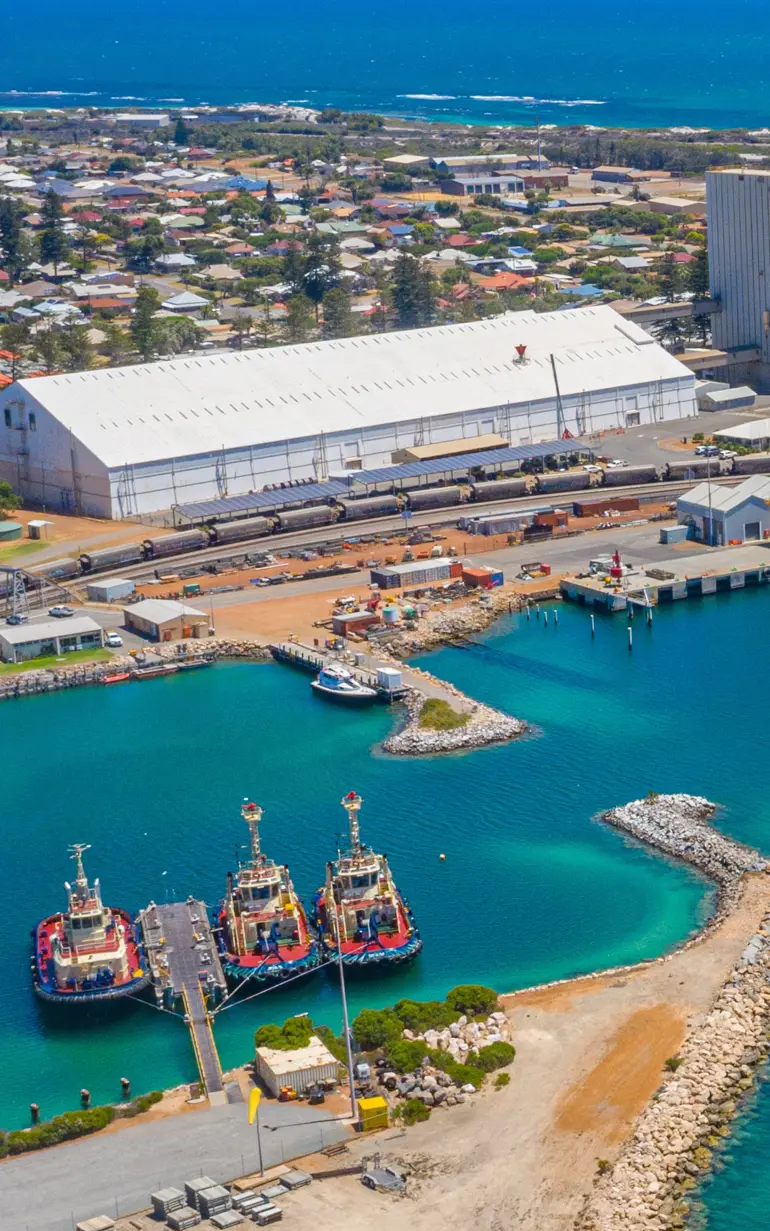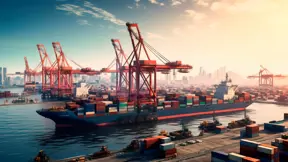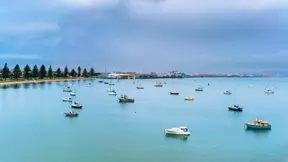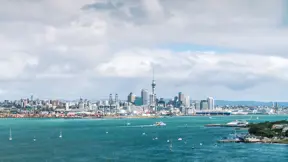
Assessing long period wave mitigation to improve port operations
Contributing to solving operational problems caused by harbour surges
Agitation by long waves often causes mooring lines in the Port of Geraldton to break, endangering both staff and vessels. The Geraldton Port Authority (GPA) – now known as Mid West Ports Authority – organised a workshop with national and international experts to find ways to address this problem. DHI provided a preliminary assessment of potential offshore mitigation schemes that could provide a solution. As a result of the various findings, GPA decided not to proceed with the originally envisioned solution – a major extension of the west breakwater – because it was questionable whether sufficient benefits could be obtained, even with large capital investments.
Challenge
The Geraldton Port Authority (GPA) wanted to reduce the cost and impact of surge delays on port operations. Mitigating surge incidents benefits port operations as these events cause critical situations for both the vessels directly involved and other vessels in the port. They also pose significant risks to staff safety and potential damage to port structures. GPA wanted to reduce the cost and impact of surge delays on port operations and needed a firm basis to make decisions in order to mitigate the problems in the future.
Consequently, they invited industry experts, including DHI, to participate in a workshop to create a foundation for new initiatives to solve the port's challenges caused by long waves. Topics included:
- long wave generation over reefs
- numerical modelling of long wave propagation into the port
- characteristics of long waves in the port
- resonance consideration and mitigation
- ship motions and mooring line tension
- improvements of mooring systems
- early alert systems for swell and long waves
Client:
Geraldton Port Authority (GPA), now known as Mid West Ports Authority
Location:
Australia
Related SDG(s):
SDG 11: Make cities and human settlements inclusive, safe, resilient and sustainable
SDG 14: Conserve and sustainably use the oceans, seas and marine resources for sustainable development
Technology:
Solution
Using MIKE 21 Boussinesq Wave (BW), DHI analysed long wave generation and propagation into the Port of Geraldton.
DHI's investigations found that a breakwater structure at the fringe of the reef would have the expected effect, but the costs of such measures would be prohibitive. A realignment of the access channel might have beneficial effects, but that would lead to navigational difficulties for vessels transiting the channel.
Based on the various findings, GPA concluded that there was no single measure that could significantly improve the conditions in the harbour within the economic constraints of the originally envisioned breakwater solution.
A number of measures, including modification of breakwaters, dredging, alternative mooring systems and improved management systems based on wave forecasting, could potentially improve conditions and when combined, might provide an acceptable solution.
Results
- Greater appreciation of the complexity of the Port of Geraldton’s long period wave climate
- Realisation that the mitigation effort is likely to involve a combination of smaller initiatives rather than the delivery of a single solution
- Identification of better potential solutions to the port's challenges
About our client
Mid West Ports Authority provides an essential service, connecting regional Australia to national and international markets as a specialist port catering to boutique and diverse operations.
You may also like
How can we help?
With our global network of offices, we make sure you get the right answers to your local needs. Tell us about your water challenges and we will get back to you.


